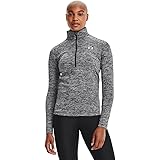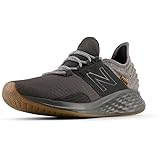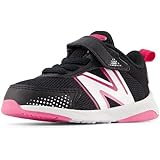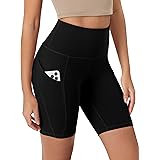Achieving a truly shredded physique often presents a formidable challenge, especially when the goal is significant fat loss without sacrificing hard-earned muscle. The journey to a lean, defined body is not solely predicated on intense training; rather, dietary strategy is frequently regarded as the cornerstone of success. Many individuals find themselves navigating a complex landscape of conflicting nutritional advice, making the identification of genuinely effective ‘cutting foods’ a primary concern.
The video presented above offers a concise list of ten go-to foods that can support a cutting phase. This list serves as an excellent starting point, highlighting nutrient-dense options vital for achieving a lean body. In this accompanying article, a deeper dive into these selections is offered, exploring the scientific rationale behind their inclusion and providing practical insights for their integration into a strategic fat loss diet. Understanding the mechanisms by which these foods contribute to a caloric deficit, maintain satiety, and preserve muscle mass is paramount for anyone serious about body composition goals.
Understanding Protein’s Role in a Cutting Phase
Protein is widely considered the most crucial macronutrient during a fat loss phase, primarily due to its high thermic effect of food (TEF), its capacity for inducing satiety, and its essential role in muscle protein synthesis. When a caloric deficit is established, adequate protein intake becomes instrumental in signaling the body to retain muscle tissue, ensuring that the majority of weight lost is derived from adipose stores. These protein sources are deliberately chosen for their high protein-to-calorie ratio, making them ideal for cutting.
Lean Protein Sources: Tuna and Turkey Breast
Tuna, particularly light tuna packed in water, is recognized for its exceptionally high protein content and minimal fat. It is a highly versatile option that can be effortlessly incorporated into salads, wraps, or as a standalone snack. Furthermore, certain varieties of tuna, such as albacore, provide beneficial omega-3 fatty acids, which are known to support overall health and may play a role in metabolic function.
Turkey breast, similarly, is a lean meat favored by those pursuing fat loss goals. Its low-fat profile and dense protein make it an excellent choice for maintaining muscle mass while restricting calories. Whether grilled, baked, or shredded, turkey breast offers a significant anabolic stimulus with minimal caloric burden, ensuring that daily protein targets are met efficiently.
Versatile Proteins: Chicken Breast and Prawns
Chicken breast is an undisputed staple in most fitness-oriented diets, and for good reason. It represents one of the leanest protein sources available, providing a complete amino acid profile necessary for muscle repair and growth. Its culinary versatility means it can be prepared in myriad ways, preventing dietary boredom during a prolonged cutting period.
Prawns offer another excellent, low-calorie protein option, being almost entirely protein with negligible fat content. They are also rich in certain micronutrients, including selenium and vitamin B12, which are important for metabolic processes. Their quick cooking time makes them a convenient choice for meal preparation, easily adding a substantial protein boost to any dish.
Dairy and Supplemental Protein: Greek Yogurt and Protein Powder
Greek yogurt stands out for its unique nutritional composition. It is a concentrated source of protein, often containing twice the amount found in regular yogurt, much of which is casein protein. Casein is known for its slow digestion rate, which contributes to prolonged satiety and a sustained release of amino acids, making it beneficial for muscle preservation, especially before longer fasting periods or overnight.
Protein powder is a highly efficient and convenient means of increasing daily protein intake, particularly when whole food options are not readily available. Various forms exist, such as whey, casein, or plant-based proteins, each offering distinct absorption rates and benefits. A well-chosen protein supplement can help individuals meet elevated protein requirements during a cutting phase, support recovery, and contribute to the maintenance of muscle tissue under a caloric deficit.
Strategic Carbohydrates for Energy and Satiety During Fat Loss
While often viewed cautiously during fat loss phases, carbohydrates are essential for sustained energy, proper metabolic function, and satiety. The key lies in selecting complex carbohydrates that are rich in fiber and micronutrients, which minimize blood sugar spikes and provide long-lasting energy. These choices help to manage hunger, a critical factor in adhering to a restrictive diet for effective fat loss.
Complex Carbs: The Unsung Heroes – Potatoes and Beans
Potatoes, often unfairly maligned, are a nutrient-dense carbohydrate source. When consumed in their whole form, especially with the skin, they provide essential vitamins and minerals, alongside dietary fiber. Furthermore, potatoes contain resistant starch, particularly when cooked and then cooled, which acts like fiber and can support gut health while contributing to feelings of fullness. This helps manage hunger during a fat loss regimen.
Beans are an exceptional addition to a fat loss diet due to their high fiber and protein content. The soluble and insoluble fibers in beans contribute significantly to satiety, slowing digestion and regulating blood sugar levels. This helps prevent energy crashes and subsequent cravings, which are common hurdles when attempting to achieve significant fat loss. Additionally, beans offer a variety of micronutrients and phytonutrients.
Fiber-Rich Fruits: Apples
Apples are a prime example of a nutrient-dense fruit perfectly suited for a cutting diet. Their high water and fiber content, particularly pectin, contribute significantly to satiety and digestive health. Consuming an apple can help to fill the stomach, reducing the urge to overeat, while providing natural sweetness and essential vitamins. This makes them an excellent choice for managing caloric intake while satisfying sweet cravings.
Beverage Choices and Micronutrient Support for Effective Fat Loss
Beyond solid foods, beverage choices can significantly impact total caloric intake and nutritional adequacy during a fat loss phase. Opting for low-calorie, nutrient-fortified drinks helps to manage liquid calories, which are often overlooked, while still providing valuable micronutrients.
Low-Calorie Alternatives: Unsweetened Almond Milk
Unsweetened almond milk is a highly effective, low-calorie alternative to dairy milk or other higher-calorie beverages. It allows for the enjoyment of creamy textures in shakes, smoothies, or with cereals without significantly impacting daily caloric targets. Many brands are fortified with calcium and Vitamin D, contributing to overall bone health, which is crucial for individuals engaged in consistent physical activity.
Beyond the Plate: Integrating These Foods for Optimal Body Composition
While the specific foods selected are crucial for successful fat loss, their integration into a well-structured nutritional plan is equally important. Consistent application of these food choices, combined with appropriate portion control and a sustained caloric deficit, forms the foundation for achieving a shredded physique. Strategic meal timing can also play a role, optimizing nutrient delivery around training sessions.
The emphasis should always be placed on nutrient density to ensure that micronutrient requirements are met, preventing deficiencies that can hinder progress. Pairing these cutting foods with a resistance training regimen is paramount for preserving and building muscle mass, which in turn boosts metabolism and aids in sustained fat loss. The synergy between a meticulous diet and a challenging exercise program is what ultimately sculpts the desired body composition, pushing towards that ultimate shredded aesthetic.











